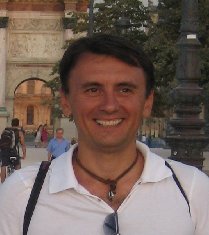
“At the time, we were seeking to screen the whole world,” Reid said. He castigated the government for propagating misinformation, and questioned the wisdom of aggressive screening programs underway in several states, cataloging instances of “genetic discrimination.” These included hiking insurance premiums for people with sickle cell trait and dismissing black flight attendants with it, based on the misunderstanding they were unable to work at high altitude. And he wasn’t shy about saying so."īowman didn’t confine his scrutiny to grassroots efforts.

He thought the intentions were good, but the implementation was outrageous. “But there was no informed consent, and people who tested positive didn’t know if they had disease or trait. “I thought, ‘This is nice, a community group doing screening,’” he recounted. Lubin, MD, was then co-director of the Northern California Comprehensive Sickle Cell Center. In Oakland, California, birthplace of the Panthers, Bertram H. On top of that, we're trying to mount a national program." There was widespread hysteria and confusion between sickle cell disease and sickle cell trait.

“Coming out of the civil rights movement, there was mistrust and unrest in the black community, and now there's this disease. “Sickle cell was launched as a policy issue with no information about it in the general populace,” Reid added. It wasn’t just about doing the right thing you had to do it the right way. Reid, MD, former director of the National Heart, Lung, and Blood Institute’s Sickle Cell Disease Program, can still recall “the shock effect” of his words. To improve understanding of test results, he called for more education and counseling.Ĭlarice D. Recently named director of the University’s laboratories, he assailed crude testing practices. In journal articles and meetings with lead players, Bowman excoriated the conflation of sickle cell anemia with the more common sickle cell trait (in which just one predisposing gene, as opposed to the two needed to produce the disease, is present, and the person is healthy) that was fanning public alarm. Bowman, MD, who died in September 2011 at 88, had just become the first tenured African American faculty member in medicine at the University. And in the well-intentioned zeal to roll out mass testing and raise awareness, little attention was being paid to the accuracy of information disseminated to the public and the ethical implications of screening on the scale that was being embraced, said an outspoken professor of medicine and pathology from the University of Chicago. The following year, he signed the National Sickle Cell Anemia Control Act, which authorized funding for screening, outreach and research to “reverse the record of neglect on this dread disease.”Īfter decades of inaction, there was a headlong rush to tackle sickle cell anemia. In February 1971, President Richard Nixon designated sickle cell anemia one of two critical areas for urgent investment under his proposed “National Health Strategy.” The other was cancer.

On the streets, the Black Panther Party took matters into its own hands, utilizing a newly available testing kit to mobilize screening in African American communities, including in Chicago. Yet funding was a fraction of that for less prevalent disorders afflicting other groups, the author wrote. Roughly one in 500 African Americans was born with the condition, noted an article in the Journal of the American Medical Association that October. For patients, life expectancy was about 20 years.

#Uchicago galton how to#
In 1970, there was no treatment for the blood disorder sickle cell anemia, and knowledge of how to manage it was rudimentary.


 0 kommentar(er)
0 kommentar(er)
